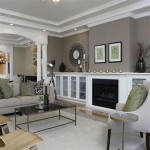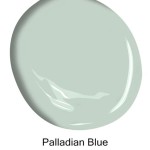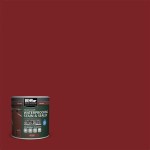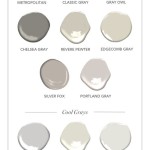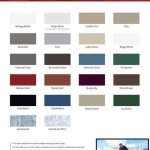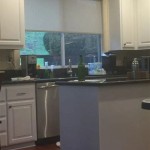What Colour to Paint a Fire Surround
Selecting the appropriate colour for a fire surround is a multifaceted decision that significantly impacts the overall aesthetic of a living space. The fire surround, often the focal point of a room, dictates the atmosphere and complements or contrasts with existing décor. Choosing the right hue involves considering factors such as the architectural style of the fireplace, the colour palette of the room, the material of the surround itself, and the desired ambiance.
The decision requires a balance between personal preference and established design principles. A poorly chosen colour can clash with the room's existing style, minimize the visual impact of the fireplace, or even make the space feel smaller and less inviting. Conversely, a well-considered colour selection can enhance the fireplace's architectural details, create a harmonious balance within the room, and contribute to a welcoming and visually appealing environment.
Before making a final decision, it's crucial to consider the existing elements of the room, including the colour of the walls, flooring, furniture, and any existing architectural details. Consider the overall style of the room, whether it’s modern, traditional, rustic, or eclectic. The colour of the fire surround should complement these existing elements and contribute to the overall design scheme.
Assessing the Architectural Style of the Fireplace
The architectural style of the fireplace is a paramount consideration when determining the best colour for the surround. Different styles lend themselves to different colour palettes. A traditional fireplace, often characterized by ornate carvings and detailed molding, may benefit from classic colours like off-white, cream, or even a subtle grey. These shades highlight the intricate details without overwhelming the design. Darker colours, such as deep greens or browns, can also work well in traditional settings, particularly if the room has high ceilings and ample natural light.
A modern fireplace, on the other hand, often features clean lines and minimalist designs. In this case, bolder colour choices can be more appropriate. Black, charcoal grey, or even a vibrant accent colour can create a striking focal point in a contemporary space. The key is to maintain a sense of balance and avoid colours that clash with the overall minimalist aesthetic. Neutral colours, such as white or light grey, are also viable options for modern fireplaces, providing a clean and understated look.
For fireplaces with a rustic or farmhouse style, natural colours are often the most suitable choice. Earthy tones like beige, terracotta, and shades of brown can enhance the natural materials often used in these designs, such as stone or wood. Distressed finishes and weathered textures can further contribute to the rustic charm, and the colour selection should complement these characteristics. Consider using chalk paint to achieve a matte finish and a subtly aged appearance.
Furthermore, consider the material of the fire surround. Fire surrounds can be made from a variety of materials, including wood, stone, marble, and metal. The material itself can influence the best colour choices. For example, a marble surround may benefit from a lighter colour that enhances its natural veining, while a wooden surround may be stained or painted in a colour that complements the wood grain.
Understanding the Room’s Colour Palette
The existing colour palette of a room plays a crucial role in determining the ideal colour for the fire surround. The goal is to create a harmonious and balanced space where the fireplace seamlessly integrates with the overall design.
If the room features a neutral colour scheme, the fire surround can serve as an opportunity to introduce a pop of colour. A bold accent colour, such as a vibrant blue, green, or red, can create a focal point and add visual interest to the space. However, it's important to use the accent colour sparingly and ensure it complements the other colours in the room. Consider incorporating the accent colour into other elements, such as throw pillows, artwork, or accessories, to create a cohesive look.
In rooms with existing colours, the fire surround should complement or contrast intentionally with the dominant hues. For example, if the room has warm-toned walls, such as beige or light brown, a fire surround in a slightly darker shade of the same colour or a complementary colour like olive green can create a sophisticated and inviting atmosphere. Conversely, if the room has cool-toned walls, such as blue or grey, a fire surround in a lighter shade of the same colour or a contrasting colour like warm white can create a balanced and visually appealing space.
Consider the intensity of the colours used in the room. If the room has bold and vibrant colours, a fire surround in a more subdued tone can help to balance the space and prevent it from feeling overwhelming. Conversely, if the room has pale and muted colours, a fire surround in a bolder, brighter colour can add visual interest and prevent the space from feeling bland.
The use of colour theory can also be helpful in selecting the appropriate colour for the fire surround. Understanding the relationships between different colours, such as complementary, analogous, and triadic colour schemes, can help to create a visually pleasing and harmonious space.
Considering the Desired Ambiance and Mood
The colour of the fire surround can significantly influence the ambiance and mood of a room. Different colours evoke different emotions and create different atmospheres. Therefore, it is important to consider the desired ambiance when selecting a colour for the fire surround.
Lighter colours, such as white, cream, and light grey, tend to create a bright and airy atmosphere. They reflect light and can make a room feel larger and more open. These colours are ideal for smaller rooms or rooms with limited natural light. They also create a sense of calmness and serenity, making them suitable for bedrooms or living rooms where relaxation is a priority.
Darker colours, such as black, charcoal grey, and navy blue, tend to create a more dramatic and sophisticated atmosphere. They absorb light and can make a room feel cozier and more intimate. These colours are ideal for larger rooms or rooms with ample natural light. They also create a sense of elegance and luxury, making them suitable for formal living rooms or dining rooms.
Warm colours, such as red, orange, and yellow, tend to create a warm and inviting atmosphere. They evoke feelings of energy, excitement, and happiness. These colours are ideal for rooms where socializing and entertainment are common, such as living rooms or dining rooms. However, it's important to use warm colours sparingly, as they can be overwhelming when used in large quantities.
Cool colours, such as blue, green, and purple, tend to create a calming and relaxing atmosphere. They evoke feelings of serenity, peace, and tranquility. These colours are ideal for bedrooms, bathrooms, or any space where relaxation is a priority. They can also create a sense of spaciousness and airiness, making them suitable for smaller rooms.
Ultimately, selecting the right colour for a fire surround is an exercise in harmonizing design elements with personal preferences. By thoughtfully considering the architectural style, the room's colour palette, and the desired ambiance, one can choose a colour that not only enhances the fireplace but also elevates the entire living space.
The interplay between the fire surround's colour and the fire itself also deserves consideration. A dark surround can make the flames appear brighter and more intense, while a light surround can create a more diffused and subtle effect. The type of fire, whether it's a traditional wood-burning fireplace, a gas fireplace, or an electric fireplace, can also influence the best colour choices.
It is recommended to test paint colours before committing to a final decision. Paint swatches can be applied to a small, inconspicuous area of the fire surround or to a piece of cardboard that can be held up against the surround. This allows for a better understanding of how the colour will look in different lighting conditions and in relation to the other elements in the room.
Consider seeking professional advice from an interior designer or paint specialist. These professionals can provide expert guidance and help to narrow down the options based on specific needs and preferences. Their expertise can be invaluable in achieving a visually stunning and cohesive living space.
:max_bytes(150000):strip_icc()/195949384_533489974504579_3035995865627682669_n-3c30dc0791c74ced9847f823ec3a55d1.jpg?strip=all)
36 Gorgeous Painted Fireplace Ideas
:max_bytes(150000):strip_icc()/310555965_180387404555210_7279885457009375134_n-7d077830f3404ff0a4e38f6cf125618f.jpg?strip=all)
36 Gorgeous Painted Fireplace Ideas

5 Modern Fireplace Ideas Dulux

How To Paint A Fireplace Graham Brown
:max_bytes(150000):strip_icc()/208368922_866049550648380_5600741727305574454_n-533ffc956ce04a8eaa7c81d2f7eb1fdd.jpg?strip=all)
36 Gorgeous Painted Fireplace Ideas
:max_bytes(150000):strip_icc()/316790213_200526072448908_1153439552944913287_n1-366d5725cb9f4c0b8a50804e850552b7.jpg?strip=all)
36 Gorgeous Painted Fireplace Ideas

Beautiful Painted Fireplace Ideas For Your Next Diy Curbly

Fireplace Paint Ideas Dulux Projects

Painted Fireplace Ideas 8 For Painting A

Paint A Fireplace To Look Like Cast Stone Porch Daydreamer
Related Posts

